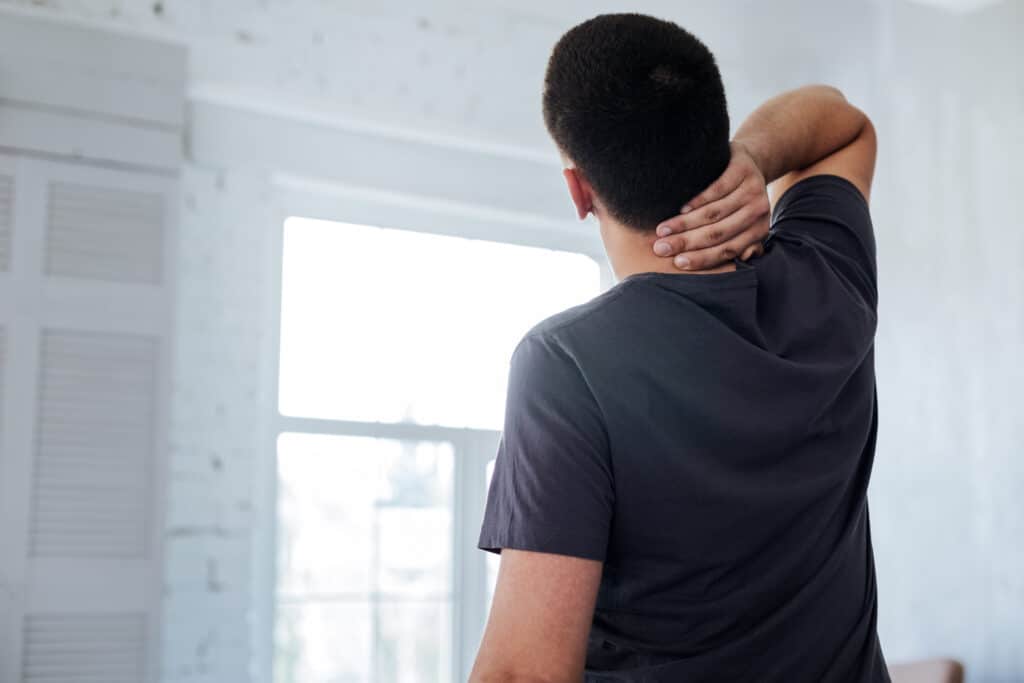
Cervical stenosis, a condition characterized by narrowing of the spinal canal in the neck region, can present significant challenges for individuals seeking relief. From discomfort to debilitating pain and neurological symptoms, cervical stenosis can severely impact one’s quality of life. Despite advancements in medical science and various treatment modalities, healing cervical stenosis remains a complex process. In this article, we delve into the reasons behind the difficulty in healing cervical stenosis and explore how integrated healthcare approaches like those offered at CARESPACE can provide holistic solutions to promote the natural healing of cervical stenosis.
The Anatomy of Cervical Stenosis:
To understand why cervical stenosis is hard to heal, it’s crucial to grasp the underlying anatomy. The cervical spine consists of seven vertebrae that support the neck and facilitate movement. Cervical stenosis occurs when the spinal canal narrows, compressing the spinal cord and nerve roots. This compression can lead to symptoms such as neck pain, numbness, weakness, and in severe cervical stenosis cases, bowel or bladder dysfunction.
Factors Contributing to Healing Challenges:
1. Degenerative Changes: Cervical stenosis is often associated with degenerative changes in the spine, such as osteoarthritis and disc degeneration. These changes contribute to the narrowing of the spinal canal and can make it challenging to reverse the condition.
2. Complexity of Symptoms: Individuals with cervical stenosis may experience a wide range of symptoms, from localized neck pain to radiating pain, tingling, and muscle weakness. Addressing each symptom effectively requires a comprehensive treatment approach.
3. Risk of Complications: Severe cases of cervical stenosis can lead to complications like spinal cord compression and myelopathy, which may necessitate surgical intervention. Managing these complications adds another layer of complexity to the healing process.
The Role of Integrated Healthcare:
At CARESPACE Health+Wellness, we recognize that healing cervical stenosis requires a multifaceted approach that addresses the underlying causes while alleviating symptoms and improving overall well-being. Our integrated healthcare model brings together a team of regulated health professionals, including physiotherapists, chiropractors, and other specialists, to develop personalized treatment plans tailored to each individual’s needs. Incorporating exercises that are good for cervical stenosis can also play an essential role in improving flexibility, reducing pain, and supporting long-term recovery.
How Physiotherapists and Chiropractors Work Together:
Physiotherapists and chiropractors play complementary roles in the management of cervical stenosis:
Physiotherapy: Physiotherapists focus on improving mobility, strength, and flexibility through targeted exercises, manual therapy, and modalities like ultrasound and electrical stimulation. They work to alleviate pain, reduce inflammation, and restore function in the cervical spine and surrounding musculature.
Chiropractic Care: Chiropractors specialize in spinal manipulation and adjustments to realign the vertebrae and relieve pressure on the spinal cord and nerves. By restoring proper spinal alignment, chiropractic care can help alleviate symptoms associated with cervical stenosis and improve overall spinal health.
CARESPACE’s Approach to Cervical Stenosis:
At CARESPACE, our team takes a client-focused approach, collaborating closely with individuals to understand their unique symptoms, goals, and preferences. We leverage evidence-based therapies and state-of-the-art techniques to address the root causes of cervical stenosis and promote long-term healing and wellness.
Our integrated treatment plans may include:
Chiropractic adjustments: To realign the spine and alleviate pressure on the spinal cord and nerves.
Physiotherapy: To improve mobility, strength, and flexibility in the cervical spine and surrounding muscles.
Massage: To reduce muscle tension, improve circulation, and promote relaxation.
Nutritional counseling: To support overall health and healing through proper diet and supplementation.
By combining these modalities in a coordinated and collaborative manner, we empower individuals to take an active role in their healing journey and achieve optimal outcomes.
Cervical stenosis presents unique challenges due to its complex nature and the diverse range of symptoms it can cause. However, with the right approach, healing is possible. Integrated healthcare models like the one offered at CARESPACE provide individuals with comprehensive solutions that address the root causes of cervical stenosis while improving overall health and well-being. By working together, physiotherapists, chiropractors, and other healthcare professionals can help individuals overcome the obstacles to healing and reclaim their lives.
Learn more about risk factors, prevention, and relief in our in-depth cervical stenosis hub.




